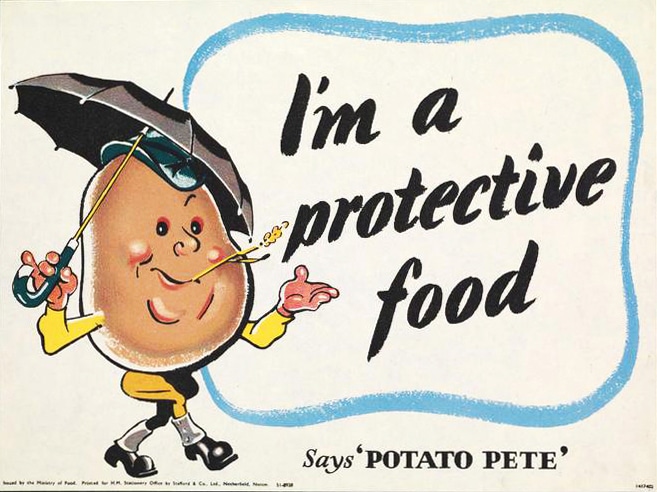To address the challenges of a second world war the government established a number of new departments to assist in their duties. Responsible for national food production and supply, The Ministry of Food played a vital role in feeding the nation through almost six years of conflict.
Here are our top ten interesting facts about the roles and responsibilities of The Ministry of Food.
1) Planning for a food rationing system in the event of war actually began in 1936, in response to the lessons learnt during The Great War. The Ministry of Food was then created with the declaration of war in 1939, and continued its duties until rationing ended in 1958.
2) Many are familiar with the strong role played by Lord Woolton, but he was not the first minister to head the department. The Ministry of Food was in fact launched with Conservative minister William S Morrison at the helm. Prior to this role Morrison was considered a potential party leader by many of his colleagues.
3) Despite being welcomed by the people, initial plans for food rationing were extremely unpopular with the press. Constant criticisms from the media prompted then Prime Minister Neville Chamberlain to remove Morrison and replace him with independent peer and businessman Frederick James Marquis, 1st Earl of Woolton.
4) Lord Woolton’s approach turned around the public image of The Ministry of Food. He addressed those on the home front directly, convincing them that their efforts and sacrifices in the kitchen would help to win the war. This earned him the affectionate nickname ‘Uncle Fred’. Woolton eventually stepped down in 1943.
5) To help the public cope with meagre rations, The Ministry of Food ran a massive publicity and education campaign. Leaflets, radio shows, cinema shorts and community cooking demonstrations all worked to boost morale at home. From reducing food waste to picking rosehips for the production of rosehip syrup, the Lord Woolton and Ministry implored the nation to get involved.
6) Working alongside nutritional experts and home economists, Lord Woolton created a food plan which improved access to food based on nutritional need rather than wealth. Pregnant women, new mothers and children were given priority, as were those working in demanding physical roles. Statistics even show an improvement in infant mortality in comparison to previous decades, thought to be as a result of fair rationing.
7) The Ministry of Food collaborated with the BBC on a radio show called The Kitchen Front. Aimed at housewives and home cooks, they were produced to meet the BBC’s aim to Inform, Educate and Entertain. The programme developed a loyal following of over five million listeners, including many working class housewives, a demographic that the BBC had previously failed to reach.
8) The Dig for Victory campaign began in October 1939. The government needed to reserve vital shipping space, as many ships were sunk by German submarine activity. Once again, posters, leaflets and broadcasts encouraged people to turn available garden space into vegetable plots. The Ministry also requisitioned green spaces such as Kensington Gardens and divided them into allotment spaces for nearby residents.
9) Root vegetables played an important role in feeding the nation, so much so that they had their own campaign materials. The Ministry enlisted the help of Disney cartoonist Hank Porter to create the Carrot family. The characters espoused the wondrous properties of this humble home grown vegetable. Another cartoon character, Potato Pete, encouraged children to eat their vegetables and warned of the dangers of food waste. Wartime singer Betty Driver (better known as Lancashire hotpot lover Betty in Coronation Street) even recorded Potato Pete his own song.
https://www.youtube.com/watch?v=F3ndKK3j8ms
10) Alongside rationing, The Ministry of Food set up community feeding centres, otherwise known as British Restaurants. Centres were run by local government or voluntary agencies on a not for profit basis. Schools and community centres were often used as they had onsite kitchens. In London mobile canteens delivered hot food to air raid shelters and street corners. These civic restaurants existed beyond the end of the war, with many still in existence into the 1960’s.
